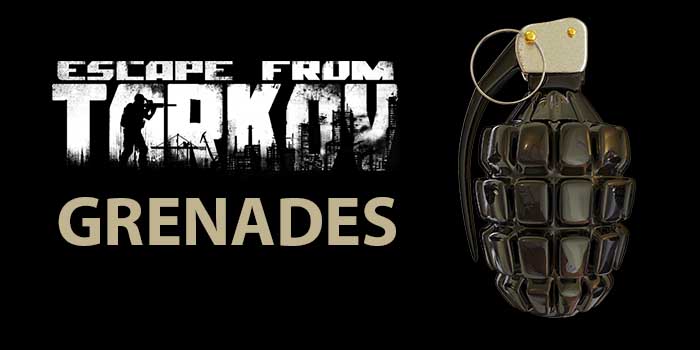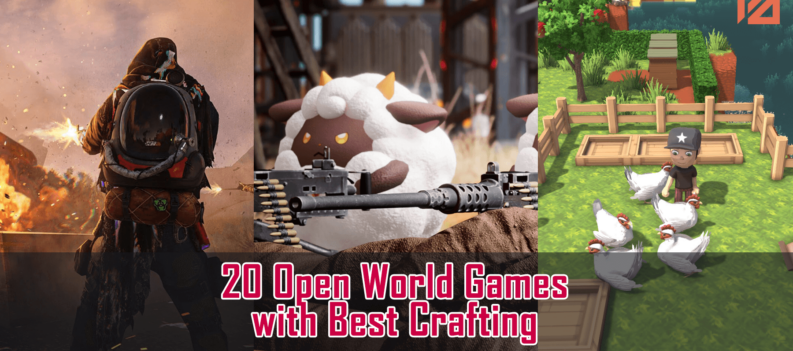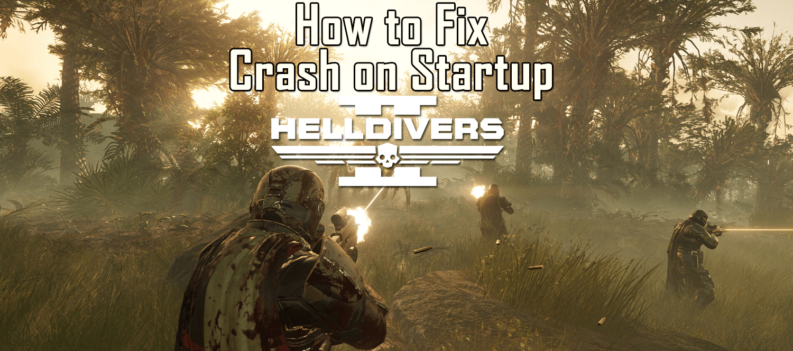The rain is relentless. Every few minutes lightning illuminates the landscape, and for a brief second, I am certain I will be spotted among the bushes. Lining up my shot, waiting until just the right moment as the guard looks away. I pause, then set my plan in motion. I fire, the sound muffled and out of earshot from the nearby guards. With the lookout taken care of, the second part of my plan automatically kicks into action, as I sneak from the bushes and take care of a patrolling thug, before dragging his lifeless body away to hide in the bushes.
Desperados III is full of little moments like this, tense scenarios and setups that can be completed in a variety of different ways. I didn’t consider myself a Real-Time Tactics kinda guy. Heck, until I played Desperados III, I didn’t even know RTT was a game genre, but now having wet my whistle, I have got to say Desperados III is a lot of fun.
Set in the Wild West, Desperados III is a story-driven, hardcore tactical stealth game. Whatever word you choose to take away from that description, let it be hardcore because you will fail. A lot. Desperados III knows this, it almost encourages it, and it has been made to play that way. Coming into this having never played many, if any, RTT games, I was struck by how elegant this system works.
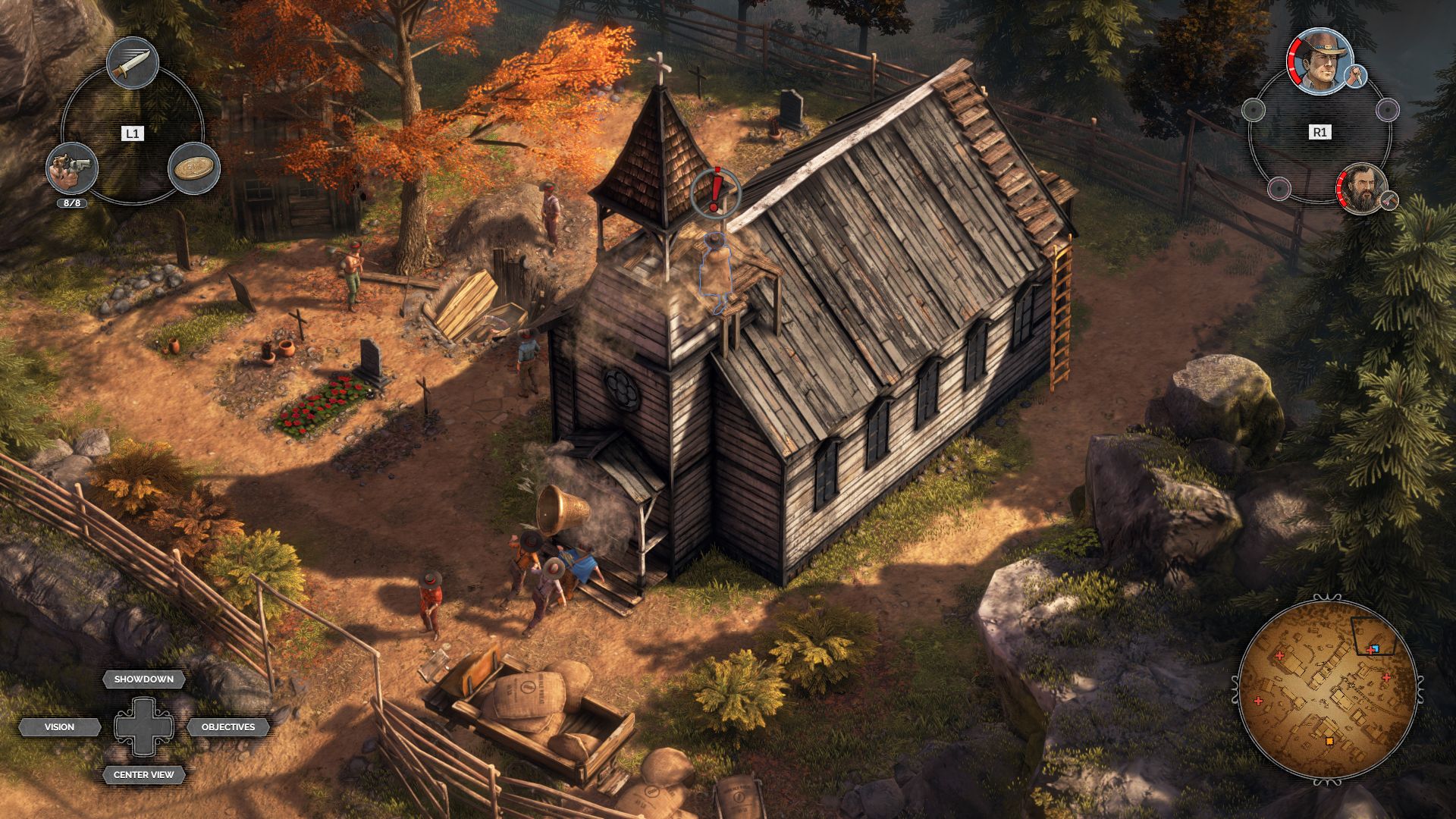
From the opening few minutes of the game, which play out like a tutorial of sorts, you are encouraged to save as often as you can. Doing so is as easy as pressing the touchpad, and should you fail, loading these quicksaves can be done from the pause menu. Being a bit of an old skool gamer, this felt a little like cheating at first, but Desperados III actively endorses saving and replaying sections should your plan go belly up. Through this system, you quickly learn that Desperados III is a game of trial and error, and it works beautifully.
Beginning the game as John Cooper, a cowboy on the hunt for a man named Frank, you set off across the Wild West. All of the usual Cowboy tropes are here, and each level is gorgeous to look at, with intricate details and quirks that can help you complete your current objective. Elements within the environment that can be interacted with can be highlighted by pressing L3, and often I would find myself going out of my way to see why certain things were important or what impact they had on my playthrough.
Your roster of playable characters grows quickly, and each one has different traits and skills that can be used to help you complete each level. Cooper has a coin toss that can be used to distract enemies, while McCoy has a sniper rifle that can be used to take out enemies silently from a distance. Each character is introduced slowly, not only giving them time to shine but allowing you time to get to grips with their skills and how each one plays.
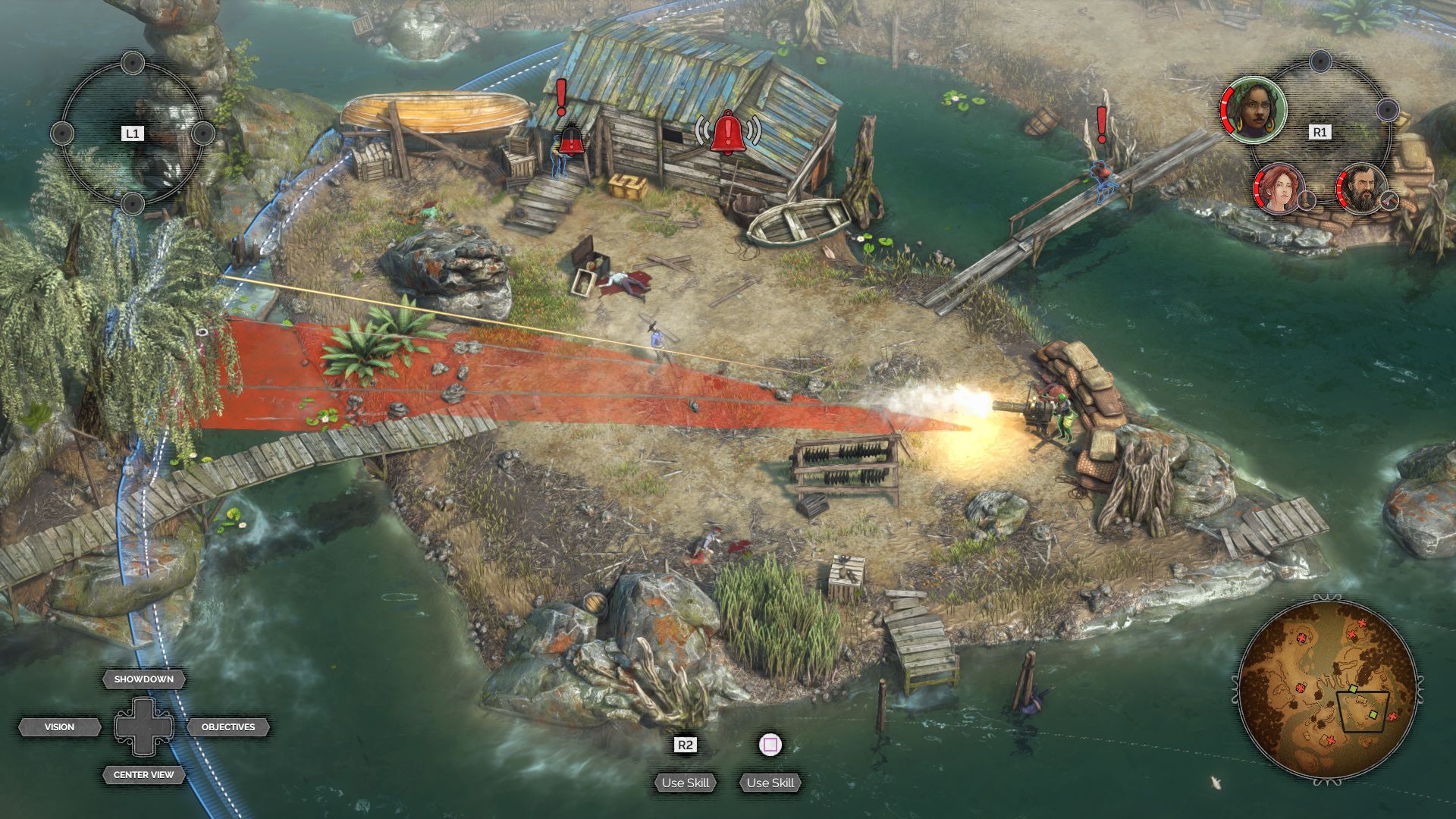
Again, this is masterfully done, with each character having a clear personality that comes through as you play. Characters regularly engage one another in conversation, filling in little bits of backstory or observations they have made. Aside from each of the characters main skills, they each differ slightly in how they can navigate the world around them. Cooper, for example, can climb vines and swim, but Hector can’t. A minor difference, but crucial when planning out how you will complete each level, but more on that in a bit.
Switching between each character is as easy as pressing R1, which either switches to the next available or brings up the character wheel if when held. Similarly, switching between the skills of each character is done in the same way using L1. Only the currently controlled character will move or carry out actions, so it is important to leave idle characters in safe areas so as not to alert the guards, but I found this quickly became second nature.
Should you wish all the characters to move at once, you simply bring up the character wheel, press X on the characters you want to move, and they will all follow the actions of your lead character right down to crouching whenever they do. It is clear Desperados started life on PC, but many of the tools and controls at your disposal carry over brilliantly, and I never felt hindered or stifled using my DualShock to play instead of keyboard and mouse.
Certain skills can only be used within your immediate vicinity, such as Cooper’s throwing knife, but things can get a little annoying when you auto-aim on one thug when you want to take out someone else, particularly in situations that require precise timing. A minor gripe, and one that is easily overcome, but a gripe none the less.
Planning is a critical element to Desperados III. Each level is essentially a giant game of cowboy-chess, as you meticulously plot your way through each level and try to keep one step ahead of what will occur should you carry out a particular action or eliminate a certain guard. To help with this, Desperados III has what it calls a vision mode that allows you to see the view cone of each guard. Not just that, but you can highlight a guard or a position in your immediate vicinity and check who has eyes on it at any given moment. This is an incredibly useful tool when planning out the best course of action, and I found myself using it every time I needed to carry out a bit of nifty manoeuvring as I crept my way around each level.
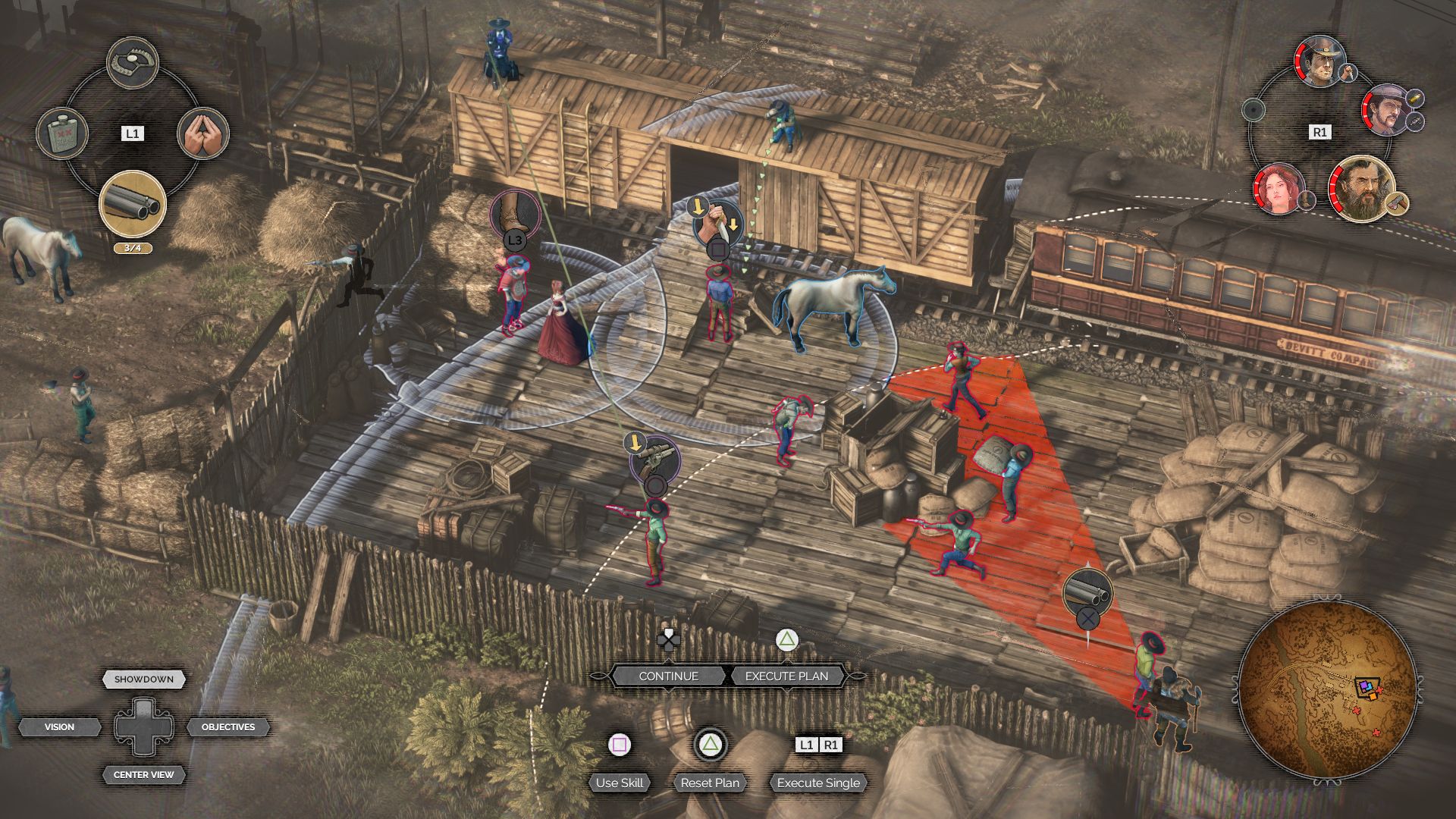
Getting caught in Desperados III is often a death sentence. Going in guns blazing is rarely an option, and although each character comes equipped with a firearm of some description, I found I would hardly use them, preferring the stealth option over the all guns blazing approach. If I was discovered it became engrained in my muscle memory to stop and reload – rarely would I let a scenario play out had I been discovered. This was simply my preference, but should you wish to fight your way out of trouble you have that option.
Desperados III has an ace up its sleeve when it comes to meticulously plan and executing your strategy – Showdown mode. By pressing up on the d-pad, time comes to a standstill and you can take control of each character and have them carry out a certain task or ability. These actions can be triggered to go off simultaneously, or one at a time depending on what you want to happen, should you wish one felled guard to lure another into a trap for example. It is such a simple system, but when put into action it works beautifully and is extremely satisfying when it all comes together as you envisioned. Should it fail, you simply load and try again – depending on whether you remembered to save or not.
At times, the camera can become a hindrance to all your plotting and sneaking. You can manually control the camera by holding R2 and then R3 to zoom in and rotate, but sometimes I felt it lacked the fidelity I would like, especially in some of the tighter feeling maps and areas. With practice, it does a decent enough job, but it can still frustrate. You can set the camera to centre view by pressing down on the d-pad which locks it in place on your current controlled character, until you press R3 again anyway, but it was here that I most felt something was lacking.
Each level varies and they too have their own charm and personality. The usual cowboy tropes are all here, from the opening mission featuring a train heist gone awry to the hustle and bustle of New Orleans and the surrounding Bayous. During the first few minutes of a level, I would often scour the surroundings looking for points of interest or potential routes to an objective, sweeping the camera around as if looking for Wally (or Waldo if you live over the pond). Levels vary in their setting and aesthetic, and I was often impressed by the amount of detail that was crammed into each one. Flames flicker in puddles, and footprints can be left in wet mud, acting as a lure to draw guards away from their posts. Each level often has a similar purpose or end goal, but I was always interested to explore and see what I could spot, and to that end, Desperados III does a great job
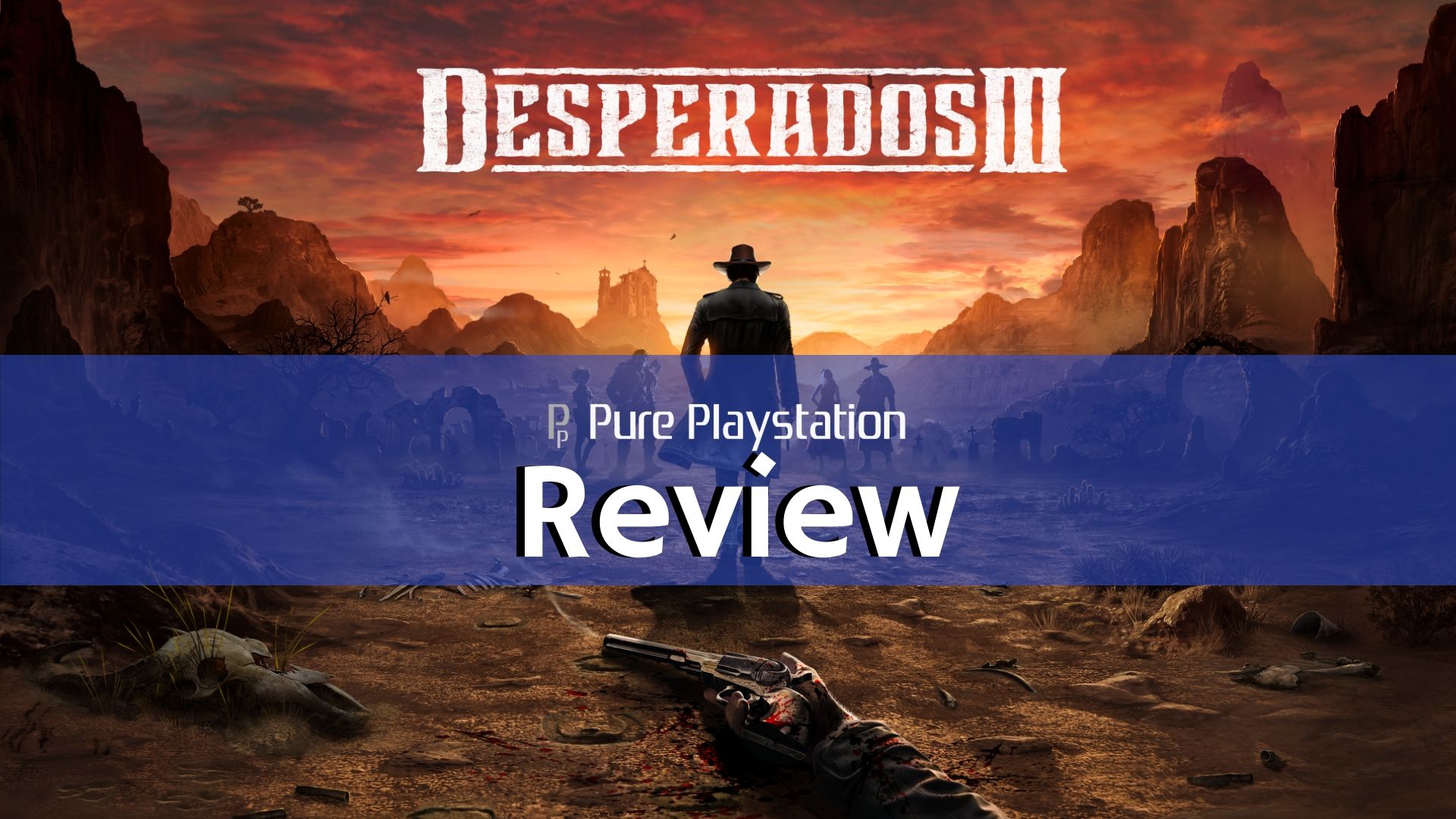
On a similar note, the level structure does start to feel a bit repetitive over the long haul. On a purely simplistic view of how Desperados III plays, each mission has you move from one position to another, with maybe the odd detour to get an item along the way. A few levels do attempt to mix this dynamic up a bit by having you search enemy-free areas looking for intel by listening to conversations, but these are few and far between. Overall you will be tasked with sneaking through one area to reach another and then doing it all over again. Don’t get me wrong there is still fun to be had, but often I would complete one level and move on to the next only to do the same things again in a different setting, which did start to feel a bit of a drag towards the later levels.
For the completionists among you, Desperados III has an impressive replay screen that runs upon completing each level. Here you get a blow by blow account of your movements and actions, from where you carried out certain skills or at which point you saved. Each level comes with badges that can be earned by completing various challenges within the level, such as avoiding a certain area or not using a particular character, and the replay feature is another tool that allows you to meticulously plan out your next playthrough. Replay value can also be found in the Baron’s challenges, that activate upon completing a certain level in the game.
Overall, I enjoyed the time I spent with Desperados III. While lacking in all-out action, it’s tight controls and brilliant Showdown mode allow for some fantastic set pieces that more than make up for it, and its story and characters do a great job of keeping things moving. If, like me, you have never really played much in the way of an RTT game before, Desperados III is definitely worth a look.
Desperados III PS4 Review
-
Overall - Fantastic - 8/108/10
Summary
Desperados III is a cowboy game with a difference, in that stealth wins out over shooting. A thinking mans western, Desperados III oozes charm, and once you get to grips with its elegant controls and brilliant showdown mode, you will be pulling off some dazzling set pieces. A great entry point if you’re new to the genre and series.
Review Disclaimer: This review was carried out using a copy of the game provided by the publisher. For more information, please read our Review Policy.
Reviewed using base PS4.


